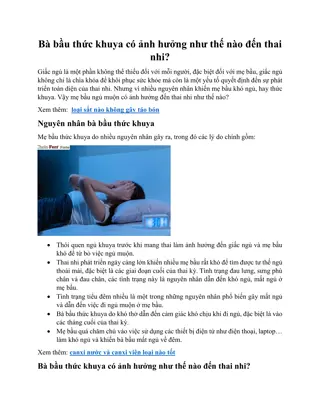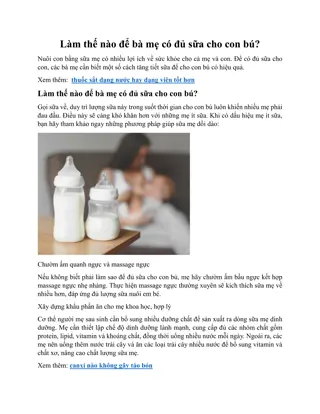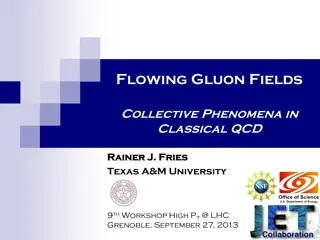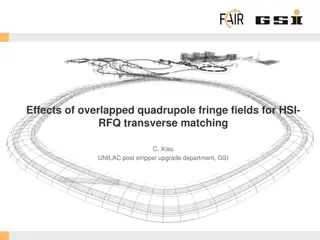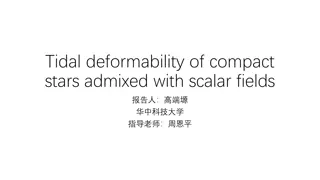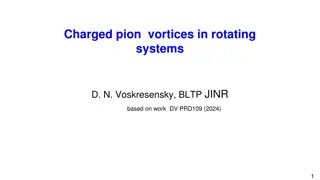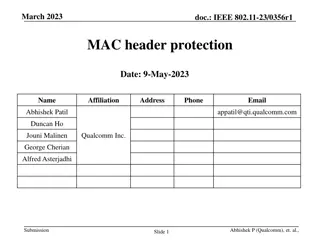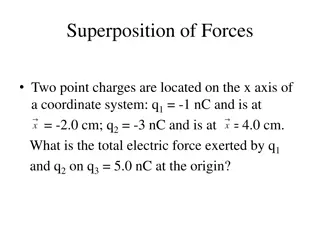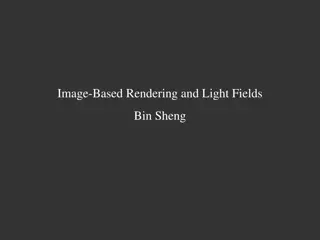The Importance of Research in Various Fields
Research plays a critical role in diverse areas such as medicine, horticulture, marketing, and production by identifying problems and providing solutions through systematic analysis and observation. It involves investigating relationships between variables to enhance knowledge, improve processes, and drive innovation in different sectors.
Download Presentation

Please find below an Image/Link to download the presentation.
The content on the website is provided AS IS for your information and personal use only. It may not be sold, licensed, or shared on other websites without obtaining consent from the author. Download presentation by click this link. If you encounter any issues during the download, it is possible that the publisher has removed the file from their server.
E N D
Presentation Transcript
Food Clothes House Consumer Goods Travel Medicine and Drugs Power Luxury etc Food Clothes House Consumer Goods Travel Medicine and Drugs Power Luxury etc etc etc
Bests Definition: Best s Definition: Systematic and objective analysis and recording of controlled observations that may lead to the development of generalizations, principles or thesis, resulting in prediction and possible ultimate control of events .
Research is a systematic or scientific investigation to search for solutions to the existing and future problems to establish relationship, if any, among variables and to find something new to increase our knowledge
A medical scientist researching to invent/ discover a medicine to cure cancer. Here cancer is the problem and the new medicine is the solution A horticulturist engaging in research to find a suitable chemical/method to improve the colour of the apple. In this case dull colour is the problem and the new chemical/method is the solution. A design engineer in a car manufacturing company trying to modify the engine to reduce fuel consumption. Here, the problem is higher consumption of fuel and the solution is new engine design. The marketing team looking out for a new promotional programme to improve sales : Problem: Poor sales Solution: New promotional programme The personnel manager in a star hotel searching for appropriate incentives Problem: Lack of motivation or low morale Solution: Appropriate incentive A financial analyst searching for a simple way of calculating VAT Problem: Complex way of calculating VAT Solution: A simple procedure of calculating VAT
Medical research undertaken to find out weather there is any true relationship between pawn-chewing and mouth cancer, sweet eating and diabetes or mental worries and baldness. Tea research station searching for correlations between shade pattern and yield of tea, sunshine and quality of tea or rainfall and fungal diseases Marketing wings investigating the association between disposable income of middle income group and sales of four-wheelers or educational background of housewives and demand for white goods. Production departments analyzing the relationship between preventive maintenance and productivity, raw materials and product quality or training programmes and industrial accidents. HRD managers conducting surveys to find plausible association between absenteeism and supervisor s attitude, incentives and overtime work or frequency of strikes and grievances handing mechanism.
A clinical psychologist intensely observing how a HIV-positive person behaves in a group to add more information to group therapy An agricultural scientist conducting a botanical survey to improve knowledge on plant diversity Govt.of India sending teams of scientists to Antarctica to explore the possibility of any biological growth in freezing environment Discovery channel deploying animal enthusiasts in African jungles to add more knowledge to animal behavior. A personnel manager observing through a hidden video camera the behavior of workers in the canteen to improve his knowledge on off- the-job behavior of workers A marketing researcher posting himself in a corner of a departmental store to understand more about customer behaviors in customer relationship management
A study of research methodology helps people: to be aware of the range of research methods that can be employed. to make appropriate choices [i.e to understand whether to employ a particular technique of data collection or analysis. to know the dos and don ts when using a particular approach to collecting or analyzing data. to provide insights into the overall research process. to differentiate good research from bad research and to transfer the learnt skills such as sampling, designing questionnaire, conducting interview, making observations etc to other areas.
to gain familiarity with a phenomenon ( buying behavior of rural population in respect of latest electronic gadgets) to analyze the characteristics of an individual, group or situation ( understanding the leadership skills of a successful business magnate, the phenomenal expansion of a new company or the reasons for delinquency in low- income groups) to determine the frequency of occurrence of certain phenomenon ( fatal accidents in highways and railway crossings and alcoholisms/ absenteeism among workers) to test a causal relationship between variables ( different age groups and their visits to beauty parlors or excess pocket money and student s absenteeism ) to develop new techniques, concepts or theories ( new advertisements through animation or promotional campaigns involving physically challenged persons) and to find solutions to problems ( this could be the ultimate objective)
to identify facts for critical evaluation. to develop new tools / techniques for studying unknown phenomena to help planning and formulation of strategies and policies. to promote better decision making to aid in forecasting and
The term RESEARCH RESEARCH itself carries the quality of the good research. Further, the popular term "MOVIE MOVIE" supplements "RESEARCH RESEARCH" in describing an ideal research
R R-Rational ways of thinking E E-Expert treatment S S-Search for solutions E E-Exhaustive treatment A A-Analytical (Analysis of data) R R-Relationship between facts and theories C C-Constructive attitude, critical observation, condensed generalization and cautious / careful recording H H-Honesty and Hard work
M M-Mathematical precision/accuracy O O-Objectivity V V-Verifiability I I-Impartiality E E-Exactness
Defining the purpose clearly. Detailing the research process Planning the research design Revealing the limitations frankly Maintaining high ethical standards. Analyzing the decision marking need adequately Presenting the findings without confusion Justifying the conclusions
Reliability Replicability Validity
Uncertainity Unexplained principles Difficulties in replication Complex Human Behaviour Controlling in Scientific method Continued
Bias in Observation or Interpretation Difficulties in measurement Lack of actionable results Inadequacy Manager s Apathy
Research process is the methodology or well defined procedure of conducting a research. it is a rigorous and impersonal mode of procedure dictated by the demands of logic and objectives. it is systematic, logical, empirical and replicable it involves various steps which are neither mutually exclusive nor are they separate or distinct. in brief, research process is a scientific enquiry
It is the process of identifying and pin- pointing a specific problem which requires a detailed investigation
Review includes collection of facts, details on concepts/theories and importantly the findings of earlier investigations/researches relevant to the problem in the process.
Hypothesis, which is a proposition, assumption or a tentative answer, is formulated to focus the research and to keep the researcher on the right track. Hypotheses (null hypothesis or alternative hypothesis) are either accepted or rejected based on the significance of statistical results
Research design includes Operational design : Collection of data from entire population (census) or a sample. Sampling design: A definite plan for obtaining a sample from a given population Observation design: Methods or tools such as interview schedule, questionnaire, personal / telephonic interview, participant/non- participant observations and etc. to collect information. Statistical Design: Selection of appropriate statistical tests to analyse the data collected. The designs are flexible to accommodate the needs of various types of research
Adequate and reliable data are collected employing appropriate technique observation, interview, questionnaire and etc.
Data processing includes editing, coding ( if necessary) and tabulation. The tabulated data are analysed employing appropriate statistical tools (tests of significance). Statistical analysis determines whether the effects, relationships or differences are significant or not. Hypotheses are either accepted or rejected based on statistical analysis
`An interpretation demands a thorough subject knowledge, analytical ability and common sense. Inferences are drawn from the interpreted data. Inferences are the final findings of the investigations
Solutions are derived from interpretations/inferences. Solution is the answer to a problem in question. Conclusions are arrived at based on the findings. It is generalization of the findings which is the essence of the whole study. Fig 1.3: Flowchart of Research Process ( Fig 1.4: Steps in conducting a social survey ( Fig 1.3: Flowchart of Research Process (Zikmund Fig 1.4: Steps in conducting a social survey (Bryman Zikmund, 2009) Bryman and Bell, 2010) , 2009) and Bell, 2010)
Conditions for the existence of a problem Conditions for the existence of a problem (i) There must be an organization, a group of people or an individual experiencing some difficulties due to one reason or other. (ii) There must be some objectives, personal or organizational, to be attained. If one does not desire anything there cannot be any problem. (iii) There must be at least two ways to attaining the objective; if there is only way, there is no confusion and hence no problem.
(iv) There must be some dilemma or confusion in selecting the best alternative to achieve objectives (v) There must be an environment which influences either the researcher or his/her ways. (vi) There must be some outcomes (results / findings) which may have positive or negative values
1. Sources for identification of problems a. Professional literature b. Professional experience (self and others c. Discussion with experts d. inferences from theories and laws e. General Sources
2. Justification for selecting a problem a.Researcher s suitability (Internal Criteria) b.General Rule (External Criteria)
Research objective must be SMART be SMART ie, they must - S Specific - M Measurable - A Achievable - R Realistic and - T Timely
1. It is an unstructured design to gain familiarity with an unknown population or phenomenon to generate new ideas to familiarize the researcher with the problem to make a precise formulation of the problem (formulation of hypotheses) to gather background information for clarifying a concept to decide whether a particular study is feasible or not to clarify and define the nature of a problem to screen alternatives. to expand the understanding of management dilemma. to identify information that should be gathered to formulate investigative questions and to find our sources for and actual sample frames that might be used in sampling design. 1. Exploratory design Exploratory design
Examples of exploratory design Space scientists exploring the possibility of existence of living organisms in other planets Zoologists/ecologists observing the behaviour of wild animals at close quarters in African jungles for Animal Planet channel A marketing researcher feeling the pulse of rural population to explore the possibility of large scale retailing of micro-oven or computers
2. Descriptive Design As the name suggests descriptive design describes an organization, industry, people, situation, phenomenon and etc. Example: To study the market share of a company s product or services vis- -vis that of the competitors to devise a strategic plan for further expansion. To describe the dealers network of a company in respect of their size, turnover, products, infrastructure facilities, workforce and etc for effective management of company- dealers relationship To observe the consumers behaviour towards a particular service for further refinement of the service
3. Diagnostic Design Diagnostic design tries to find out the relationships, if any, among the various variables, dimensions or parameters. It aims at identifying the causes of a problem to enable the researcher search for a solution It helps in testing of hypotheses
Examples of Diagnostic design are To study to reasons for the low/high market share of a particular product/service To find out why the dealers interest in a particular product/company is on the decline. To understand why the consumers behave in a particular way towards a particular service/product
4. Analytical Design This design is a part of diagnostic design. It is presumed that analysis is a pre-requisite for diagnosis. In medical profession, the physician subjects the patient to a number of tests (analyses) such as measurement of blood pressure, blood/urine sugar, hemoglobin, cholesterol and etc. for diagnosis of the ailment.
5. Causal Research Method Known as explanatory research, causal research method is a design to identify cause-and-effect relationships among variables
6. Experimental Design Experiment is a research method in which conditions are controlled so that one or more variables can be manipulated to test a hypothesis.
Examples of Experimental design A physician administering different medicines on groups of patients to find out the most curative medicine An agricultural scientist applying various types of fertilizers in the field to choose the best fertilizer for improvement of yield of a crop
A case study is an in-depth and thorough study of an organization, a group of people, an industry, an individual or a phenomenon.
In the sampling method instead of every unit of the population, only a part of the population is studied and conclusions are based on the data/information collected from that part of the population
There are two important principles which govern the theory of sampling 1. Principle of statistical regularity 2. Principle of Inertia of large numbers
The law of statistical regularity states that a moderately large number of items chosen at random from a large group, are almost sure on the average to possess the characteristics of the large group .
It states that, other things being equal, larger the size of the sample, more accurate the results are likely to be. This points out to the fact that conclusion drawn based on a larger sample is more reliable than that of a smaller sample.
Population: A population is the total collection of elements/units about which some inferences are drawn. It is also known as universes. Finite population: If the number of elements/units in a population is limited and accessible to the researcher for data collection, it is known as a finite population (car manufacturers in a country, exclusive dealers of a popular brand of white goods, students in a class)
Infinite population: If the researcher has no definite idea of the total number of units of a population and accessibility to all the units is not easy for data collection it is an infinite population (TV viewers, bicycle owners, black money launderers, drug addicts, cell-phone users in a city, income tax evaders, customers of a departmental store or consumers of pizza)
Target population: It is part of the total population about which the study is concentrated (users of a particular network among the mobile phone owners, students with commerce degree among the MBA students, computer-savvy employees in an organization or post-graduates among the call-centre employees). Subject: It is a single member of a sample as element in population.

 undefined
undefined










